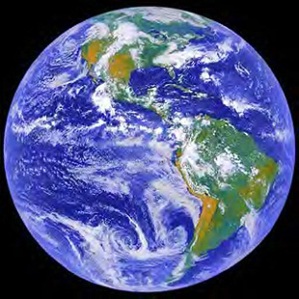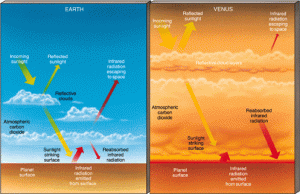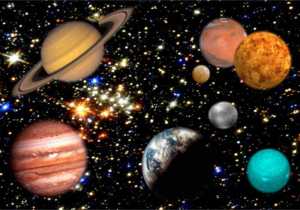 What we need for survival
What we need for survival
For humans to survive we need oxygen, therefore any planet which does not have oxygen would be unsuitable for us to live on. We also need a supply of water. We need water for many reasons such as to grow food or for other animals. We also need things to eat so if a planet is not able to sustain animals and plants, it also would not be suitable for long-term survival. We need a certain amount of sunlight and we need a planet which is neither too hot or too cold. A planet with stable temperatures between 0C and 40C would be suitable. We also need an atmosphere to shield off the harmful rays from the sun. Below the different planets in our solar system are considered whether they fulfil the basic requirements for life.
Mercury
Mercury has only a very thin atmosphere. It is made from 52% oxygen. Because of this thin atmosphere the temperatures are not constant and range from -180 to 430 degrees Celsius. These temperatures are too inconsistent and therefore do not create a suitable environment for us to live in. This planet does not have any water and is also frequently hit by meteors. Mercury does not have much gravity, it has less than half the gravity that earth has.
 Venus
Venus
Venus has a constant temperature as it has an extremely thick atmosphere that acts in a similar way to our own. Although Venus’s atmosphere only lets in about 20% of the sunlight, heat cannot escape. This contributes to the stable surface temperature of 464 degrees Celsius, which is far too hot for us.Venus has only slightly less gravity than the earth has. There is also lots of volcanic activity on Venus.
Mars
The atmospheric pressure on Mars is less than one percent of earths atmospheric pressure. Most of the atmosphere is made from carbon dioxide. with oxygen and other gases forming less than 0.4%. This shows that there would not be enough oxygen for us to survive. As well as this the temperature is far too low, ranging from -125 to 25 degrees celsius. There is no water on Mars now but there is evidence that there once was water flowing over Mars. There is however, ice on Mars. As well as this the gravity on Mars is low.
Jupiter
This planet has more than double the amount of gravity than earth. Its average temperature is again too cold for us, it is -110 degrees celsius. There is no oxygen or water on Jupiter. There is also no solid ground, as Jupiter is mainly formed from gas. For this reason it would not be possible to live on Jupiter.
Saturn
Saturn has roughly the same gravity than earth. It is also a gas giant which means apart from the core there is no solid crust. It also has no oxygen and is made mainly from hydrogen gas. As with Jupiter the temperature of 140 degrees celsius is too low for life.
 Uranus
Uranus
This planet does have water but is still unsuitable for us to live on. It has an atmosphere made of hydrogen and helium gas but no oxygen. Under this there is a layer of methane, ammonia ices and water. In the centre is a core made from rock and ice. The gravity of this planet is slightly less than that of earth and the temperature is -214 degrees celsius, again too low to support life. The atmosphere of Uranus absorbs the sun’s light and heat contributing to the low temperature.
Neptune
The composition of Neptune is very similar to that of Uranus. It has more gravity than earth and no oxygen. This planet however is slightly less cold than Uranus being around -200 degrees celsius.
Pluto
Even though Pluto is no longer considered a planet I have included it. Pluto has barely any gravity and an extremely low temperature of -230 degrees celsius. It has a large rocky core surrounded by water ice and coated in an icy crust. The atmosphere is made from 99.97% nitrogen.
 Over all
Over all
In all none of the other planets in our solar system would be suitable. They have either too low or too high temperature and not enough oxygen or water. Most also do not have a consistent atmosphere or solid land.
Even if one of the planets in our solar system would be suitable there would be the question of how to get there. To get to the closest planet to earth, which is Venus, it would take longer than 3 months with current technology and this is beyond the ability of astronauts to survive the radiation during the trip.
Leave a comment